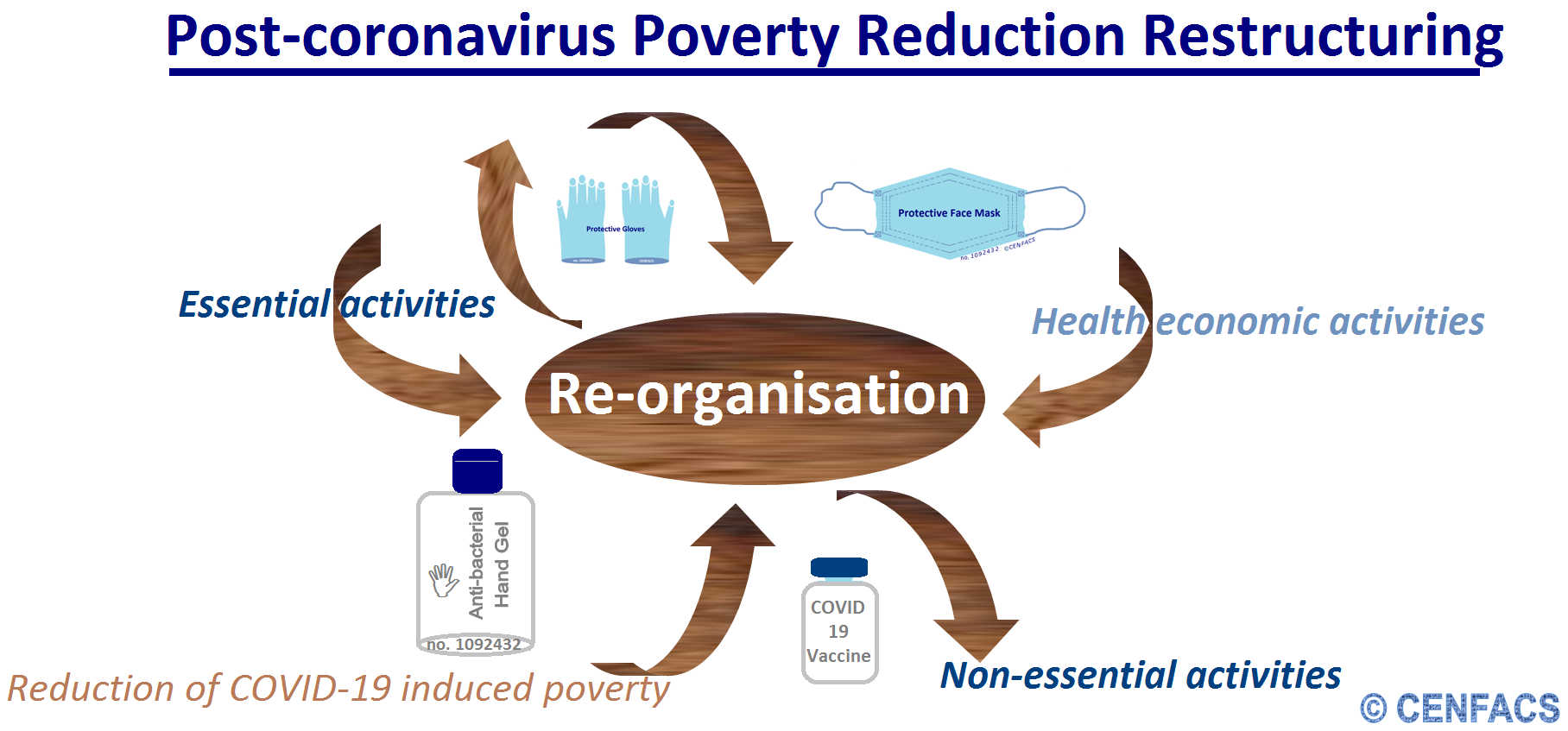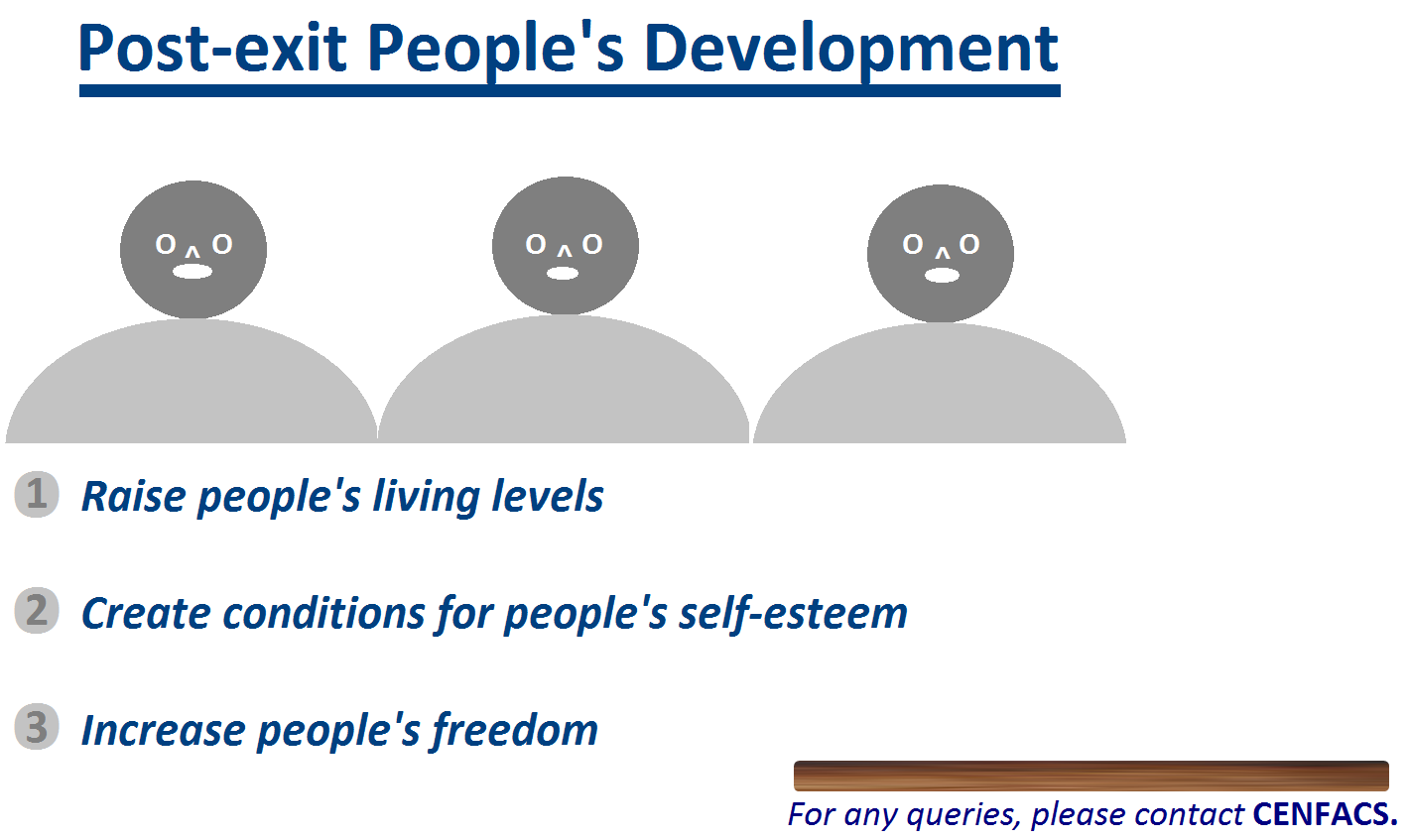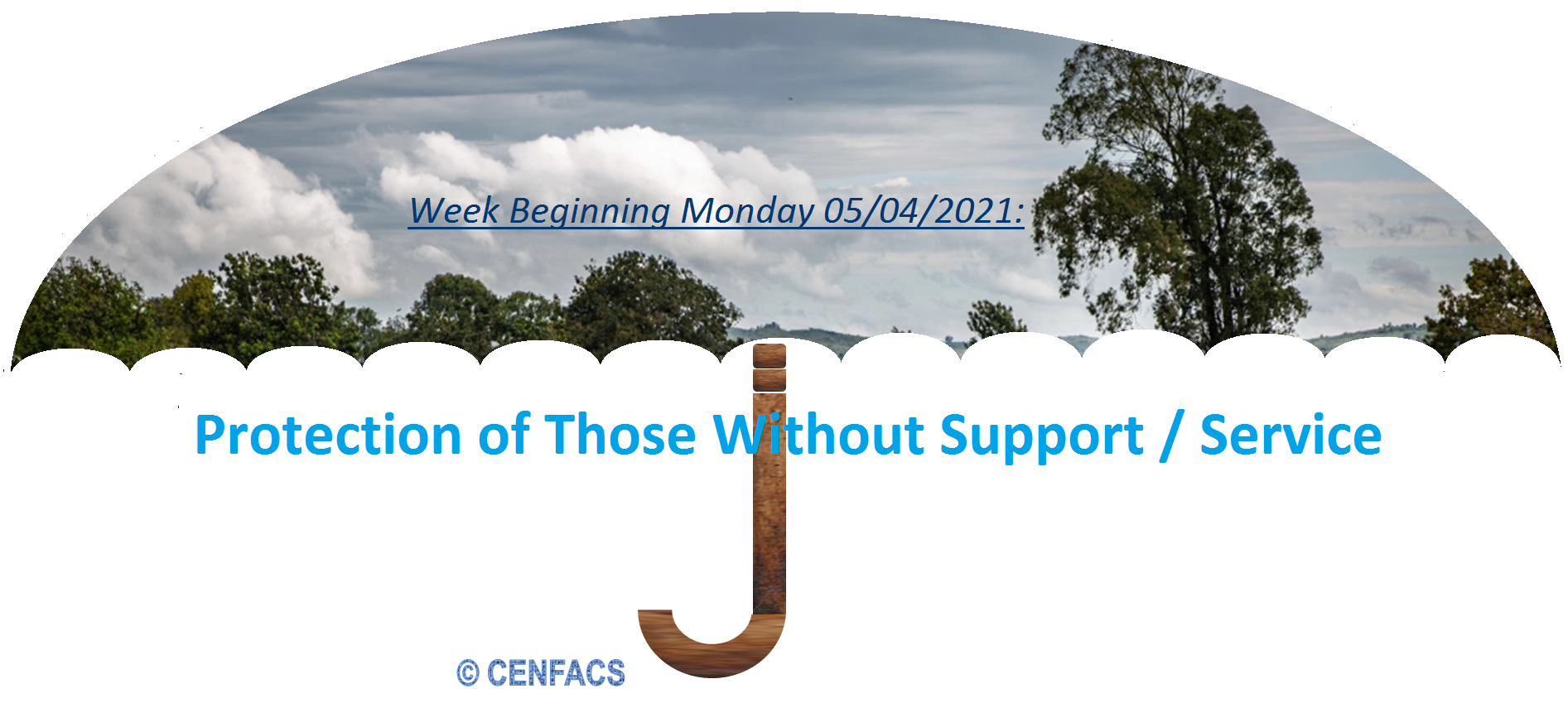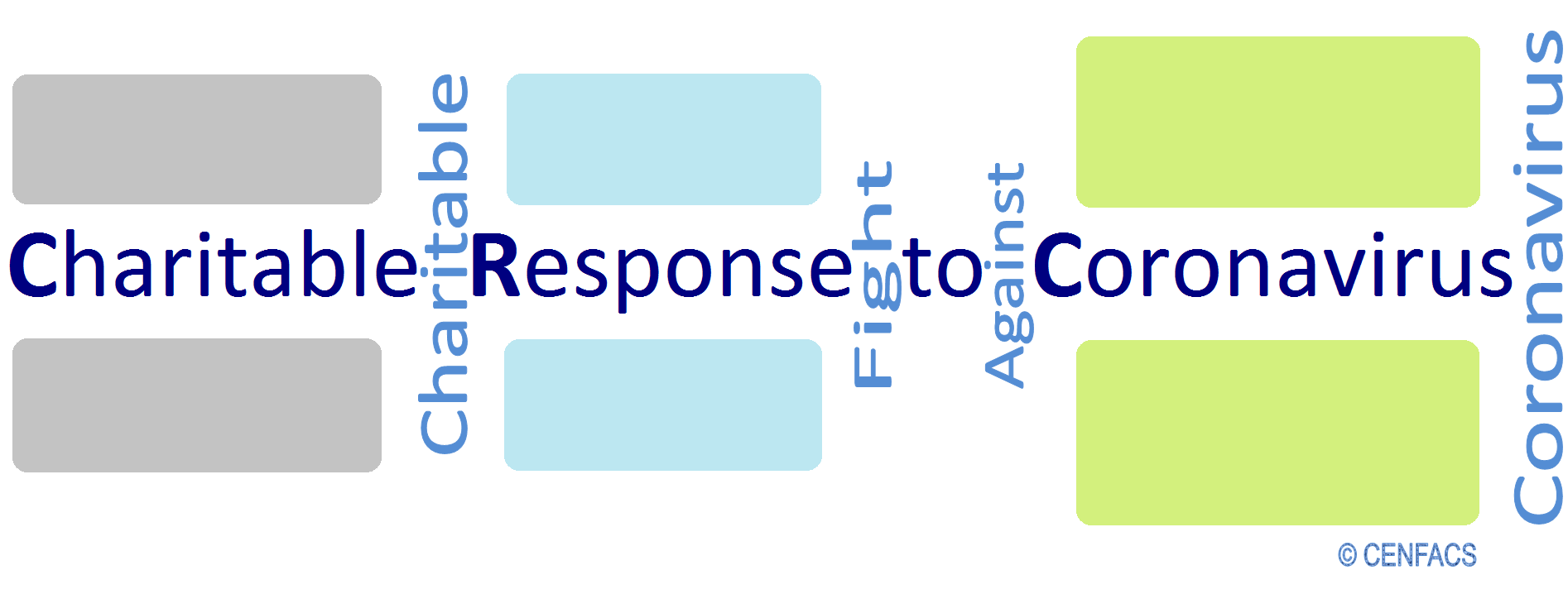Welcome to CENFACS’ Online Diary!
07 April 2021
Post No. 190
The Week’s Contents
• Post-coronavirus Poverty Reduction Restructuring and Post-exit People’s Development Projects
• Protection Key Note 1: Protection of Those without Essential Support and Service
• Green and Sustainable Alignment of Protection to Long-term Greenhouse Gas Emission Reduction Goals and Targets
… And much more!
Key Messages
• Post-coronavirus Poverty Reduction Restructuring and Post-exit People’s Development Projects
Protecting people and communities (or defending them against harm or danger) is about working with them in order to find solutions (via projects) to the problems, threats and risks they may face. This would be the same in case of self-protection.
In the context of CENFACS’ work with the community, there are many problems that organisations and the people CENFACS work with are facing. Among these problems, we can single out two current of them, which are: poverty during the post-coronavirus time and people’s development in the post-exit era.
The post-coronavirus time is the period during which the idea of coronavirus is already settled in people’s mind set and coronavirus is no longer a strange concept. The post-exit era is the period after an economy has exited from a regional economic integration model (like the UK exited from the EU). Post-exit as an idea is not any more something new.
Because of the severity and deepness of the coronavirus impacts and the scars that economic exit have brought, the work of poverty reduction may not be the same or business as usual in the post-coronavirus and post-exit times. For example, the coronavirus has made Africa to exponentially lose a hard-won decade of steady economic growth and poverty reduction.
In this kind of circumstances, there could be a need to rethink or restructure the way in which poverty has been dealt with in the pre-coronavirus and pre-exit times. Thus, a new way or model of reducing poverty and hardships may need to be found. This could include new methods, techniques (qualitative and quantitative), approaches, theories, practices, paradigms, etc.
To support these organisations and people to overcome the above mentioned problems, we have planned together with them a number of sustainable initiatives, which we can call “Post-coronavirus Poverty Reduction Restructuring and Post-exit People’s Development Projects”. These are the projects that we previously argued would enable to make smooth transition from 2020 to 2021.
During the Month of Protection and thereafter, we shall work with the community via creative and innovative ways of dealing with poverty in order to find possible answers to the problems they are facing. Likewise, we are going to explore with our Africa-based Sister Organisations the best possible way of reorganising their activities of dealing with poverty to reflect the current changes in the poverty reduction market developments.
The work with the community as well as with Africa-based Sister Organisations will be conducted via these “Post Projects” related to people’s development and organisational restructuring respectively.
Under the Main Development section of this post, we have given the key highlights about these “Post Projects”.
• Protection Key Note 1: Protection of Those without Essential Support and Service
This week, we are starting the implementation plan of the Month of Protection with this first protection key note; a month which is of protection against enduring coronavirus.
At this time of enduring coronavirus, not all those in most need have been able to access the basic support and service they need. Likewise, many of them have not been involved in working with those who could help to help them.
There could be many reasons that explain this lack of access and involvement which include:
√ Those without support or service could be simply falling through the net
√ They may not be able to meet the punitive financial bailout terms and conditions of some of the bailout schemes, projects, programmes and policies
√ They are not able to pay their own bills (e.g. communication bills) in order to seek help and support
√ They do not have any essential service because their life line support services are closed or have been destroyed by the impacts of coronavirus disaster and lockdowns
√ They are digital, information and communication poor, as such they are or become voiceless and invisible within the system
√ They are informal and unregistered, therefore unrecognisable or ineligible for help and support
Etc.
Whether or not there could be a genuine reason that makes those people not getting the essential support or service the need, they deserve to live in a dignified manner like any human beings. It is not simply acceptable to see humans suffering in humiliating and dehumanising manner by not having food, shelter and basic sanitary necessities to protect themselves against diseases (like the coronavirus).
Protecting these people at the time of enduring coronavirus should really be on the top of the agenda. Protecting them is on the rebound about protecting the public or those near them. Failure to protect them may result in threats and risks for the health and economic life of others. If not, there is a probability that they could pass their problems (such as poor health) to other members of the public or their inner circle.
So, there could be some health and economic duties as well as benefits to protect everybody in this extraordinary time of the coronavirus pandemic, especially those who do not have any line of support or service. They need protection if the society and economy want to come out stronger and together from this coronavirus crisis. Monitoring and reporting of protection relating to those in most need have to be regularly and systematically conducted for this purpose.
This is our first protection key notes for the Month of Protection 2021. For those who have any queries or enquiries regarding these notes, please do not hesitate to contact CENFACS.
• Green and Sustainable Alignment of Protection to Long-term Greenhouse Gas (GHG) Emission Reduction Goals and Targets
• • What is green and sustainable alignment of protection?
Green and sustainable alignment of protection simply means positioning ourselves for the defence against harms and dangers should be done in a way that does not cause harm to the environment, while it is continued over the long term without adverse effects. This alignment of protection is required for the GHG emission reduction goals and targets in the interest of the commons.
• • The alignment of protection to GHG emission reduction goals and targets
Defending humans and things from harms or dangers may demand taking into account the target requirements in terms of reduction of greenhouse gas emissions. These greenhouse gas emission reduction targets are binding targets to progressively reduce GHG emissions to be in line with the Paris Agreement goal of keeping the global temperature increase to well below 2ᵒ C and pursuing efforts to keep it to 1.5ᵒ C. From this binding global goal, each part and place of the world are making their own efforts to set up targets or pledges in terms of net-zero emissions by 2050.
In order to move towards the 1.5ᵒ C trajectory; protection of humans, animals and other things needs to be aligned to this long-term climate goal and target. In this respect, green and sustainable alignment of protection is about arranging our protection positions or repositioning our work on protection so that they can reflect the climate need and agenda of meeting the GHG emission reduction targets.
The above means in every role or character in role-playing game of protection we are involved in as part of protection, we need to consider or have the net-zero emission thinking of alignment. So, this thinking will be like a reminder for us and will help to make our protection work like the one that saves, preserves and conserves natural and non-renewable resources without depleting them. It is finally about making protection capable of continued over the long term without adverse effects.
Those who may be interested in this issue of green and sustainable alignment of protection, they can contact CENFACS for further discussion on the matter.
Extra Messages
• Leafy Year and Month of Protection
The Month of Protection is also of protection of leaves from biological pest as we are in CENFACS’ Year of Leaves. It is about the defence of leaves against damage caused by herbivores. This defence can help leaves survival and reproduction.
In this respect, in order to continue our Campaign on Leaves, we are going to consider three areas of interest in this Month of Protection:
(a) Protection of leaves/plants
(b) Medicinal benefits from leaves/plants for protection against the coronavirus and future diseases and
(c) The way in which Africa-based Sister Organisations can enhance the Leaves Campaign.
(a) Protection of leaves/plants
Although plants produce their own chemical defences (such as thorns, spines and prickles) through secondary metabolites that act as repellents or toxins to herbivores or reduce digestibility, it is in human interest to protect plants/leaves, especially as we need them for food, medical and other living purposes.
The Month of Protection via the Year of Leaves is also about dealing with poisonous leaves for human/animal protection. It means for example working to reduce the toxicity of some types of leaves that produce toxins that deter herbivores (such animals and insects) from consuming them. Although human fatalities caused by plants are low, it is in the interest of humans and our users to study and be aware of these plants as we talk about protection.
(b) Medicinal Benefits from leaves/plants for protection against the coronavirus and future diseases.
There are many types of leaves that have been used for medicinal purpose since the beginning of mankind civilisation. The Month of Protection gives us a further opportunity to learn the history of leaves in curing diseases as well as to use these leafy legacies to deal with new health challenges like the one posed by the coronavirus. During this era of enduring coronavirus, in some parts of the world people have been using some types of leaves to protect them from infection and bacteria by cleaning their hands with protective leaves.
(c) How Africa-based Sister Organisations can enhance this Campaign on Leaves
Many of our Africa-based Sister Organisations working in the field of plants and leaves are familiar with what we have just briefly described above. They can use this Month of Protection in a Year of Leaves at CENFACS to better highlight the importance of leaves in protecting their users.
They can send additional messages or testimonies about the relevancy of leaves in helping their beneficiaries from poverty, hunger, famine and disease, as well as in providing ingredients in helping people in their living environment (e.g. leaves can be used to build a mattress for those in need to sleep, they can be used as energy as well).
To the above, one can add other usages (nutritional, cultural, religious, etc.) of leaves such as wrapping food with banana leaves, creating a cross with palm leaves to celebrate Palm Sunday for Christians during the Easter period, etc.
To sum up, leaves need to be protected although they have their own chemical defences. Many types of leaves have medicinal properties that help protect human from and cure diseases as well stop the transmission of diseases. If leaves are poisonous, then it is in human interest to learn about it and deal with it.
For those who are interested in leaves as protection, they are welcome to discuss with CENFACS the matter.
• Help CENFACS fight the Coronavirus-induced Poverty together with you this Easter
You can donate or pledge or make a gift aid declaration to help CENFACS’ in its Charitable Response to the Coronavirus (CRC) or Charitable Fight against the Coronavirus (CFAC).
CRC or CFAC is a CENFACS’ contribution via its supporters to the global effort to fight the coronavirus pandemic.
Any of the donations, pledges and gifts given will help the coronavirus-affected poor people in Africa.
To support, just contact CENFACS by quoting or asking the Charitable Response to the Coronavirus (CRC) or Charitable Fight against Coronavirus (CFAC).
CRC or CFAC is a fundraising campaign set up by CENFACS to support the coronavirus-stricken poor people in Africa.
Thank you!
• Holiday with Relief at Easter Time
The Individual Capacity Development Programme (ICDP) resource entitled Holiday with Relief continues to be our source of reference and support this Easter holiday, together with its focus on ‘Restricted Holiday’.
For those who are looking for advice, tips and hints including fixers for their Easter holiday; our ICDP resource is a handy basic companion to consider for Holiday with Relief. It contains useful pieces of information for holiday with relief whether holiday makers stay at home or go away to pass their holiday. In this particular time of the coronavirus-restricted Easter holiday, it can help about self-isolation, social distancing protection, confinement and lockdown easing.
Its handiness and usefulness are as good for this year’s edition as for the previous issues.
To request a copy of the ICDP resources, please contact CENFACS.
Whether you pass your Easter holiday in self-isolation or confinement or not, CENFACS would like to wish you a Very Healthy, Safe and Hopeful Easter Time!
Main Development
• Post-coronavirus Poverty Reduction Restructuring and Post-exit People’s Development Projects – Key Highlights
To better highlight the above named projects; let us start with their meaning.
• • Understanding Post-coronavirus Poverty Reduction Restructuring Projects and Post-exit People’s Development Projects
• • • Post-coronavirus Poverty Reduction Restructuring Projects (PCPRRPs)
Post-coronavirus Poverty Reduction Restructuring Projects (PCPRRPs) are a series of activities, proposals, plans, processes and tasks to deal with changes within the components of poverty reduction systems or structures in the post-coronavirus development era. In other words, they are sustainable development initiatives that help in the reorganisation of the constituting elements in the process of reducing poverty during and after the fight against the coronavirus pandemic.
As Witold Kowalski (1) puts it:
“Reorganisation is a necessary process to respond to external market developments or to take any company to the next, higher level. It is the company’s friend if executed properly”.
To respond to the new market developments brought by the life-threatening and destroying impacts of the coronavirus, poverty reduction systems need restructuring. This is about aligning poverty reduction systems and structures with the current trend reflected by the new development landscape caused by the coronavirus pandemic and greenhouse gas emissions reduction goals and targets. In this respect, COVID-19 has not only brought threats and risks; it has also come along with it new opportunities and openings to reduce poverty and meet needs differently.
• • • Post-exit People’s Development Projects (PEPDPs)
Post-exit People’s Development Projects (PEPDPs) are a set of activities, processes and tasks that help raise people’s living levels, create conditions for people’s self-esteem and increase people’s freedom from poverty and hardships after the economy they belong to or work within exits from a regional economic integration model. Through these projects, the goal is to make sure that the economic well-being and quality of life of users do not go down or get worse because of the economic exit from economic integration.
PEPDPs find their explanation in the notion of development as defined by M. P. Todaro and S. C. Smith (2) who argued in the glossary page of their book on economic development that development is …
“the process of improving the quality of all human lives. Three equally important aspects of development are [1] raising people’s living levels…[2] creating conditions conducive to the growth of people’s self-esteem…[3] increasing people’s freedom by enlarging the range of their choice variables, as by increasing varieties of consumer goods and services” (p. 810)
PEPDPs will try to help those in need to achieve these three aspects of development. Particularly, the projects will help the community to keep and or improve standard in poverty reduction as the country exited from the EU. The projects will use any breakthroughs emerging from the new situation to even upgrade the work of poverty reduction and sustainable development.
• • How these “Post Projects” work
Under the PCPRRPs, CENFACS will try to work with Africa-based Sister Organisations so that they can reorganise their poverty reduction works by classifying them between essential and non-essential activities, between healthy and unhealthy ones. Together we can to look at those areas of their work that need restructuration, externalisation, delocalisation, re-localisation, etc.
In this process, the underlying value of restructuring is centred on the concepts of poverty reduction and sustainable development. The PCPRRPs will help them to further focus on their core activities while mitigating the adverse impacts of the coronavirus pandemic and side effects of lockdowns.
Under the PEPDPs, CENFACS will try to work with the CENFACS Community in the areas of sustenance by helping them to meet the basic life-sustaining human needs of food, health, education, housing, digital, information, protection, etc. services so that they can reduce levels of poverty associated with them. CENFACS will as well work with them on matter of self-esteem as human beings and of freedom to choose in order to reduce poverty and hardships linked to the lack of respect and lack of choice.
• • PCPRRPs and PEPDPs in the context of the coronavirus pandemic
Both PCPRRPs and PEPDPs will respectively help keep organisations and people healthier and safer as well as having good quality sanitation facilities.
The two types of projects will help in the following:
√ Keeping beneficiaries educated and informed about poverty restructuring and people’s development as we have been doing it through our COVID-19 Campaign
√ Working with them so that they can develop solutions and receive the support and/or service they need in order to survive in the new context of coronavirus and intermittent lockdowns
√ Helping them to take actionable steps in the processes of poverty reduction restructuring and their own development
• • Steps we shall take to implement PCPRRPs and PEPDPs
To implement both initiatives, we will take the following steps:
√ Identify the problem areas
√ Create objectives to deal with the problems
√ Estimate and secure funding sources for restructuring and people’s development
√ Restructure activities for organisations
√ Help people meet the basic life-sustaining needs
√ Monitor and evaluate results
√ Report and review the entire poverty reduction restructuring and people’s development projects.
The above key highlights give some basic information about PCPRRPs and PEPDPs and the way in which they can help beneficiaries (organisations for PCPRRPs and individuals for PEPDPs).
For those who would like to learn more about these “Post Projects” or just to enquire, they are free to contact CENFACS.
__________
References
(1) Witold Kowalski, The Process of Organisational Restructuring for Large Corporations at https://expert360.com/resources/articles/process-of-organisationalrestructuring (accessed April 2021)
(2) P. Todaro & S. C. Smith (2006), Economic Development, 9th Ed., Pearson Education Limited, USA
________
Help CENFACS keep the Poverty Relief work going this year.
We do our work on a very small budget and on a voluntary basis. Making a donation will show us you value our work and support CENFACS’ work, which is currently offered as a free service.
One could consider a recurring donation to CENFACS in the future.
Donate to support CENFACS!
FOR ONLY £1, YOU CAN SUPPORT CENFACS AND CENFACS’ PROJECTS, JUST GO TO http://cenfacs.org.uk/supporting-us/
Thank you for visiting CENFACS website and reading this post.
Thank you as well to those who made or make comments about our weekly posts.
We look forward to receiving your regular visits and continuing support throughout 2021 and beyond.
With many thanks.








